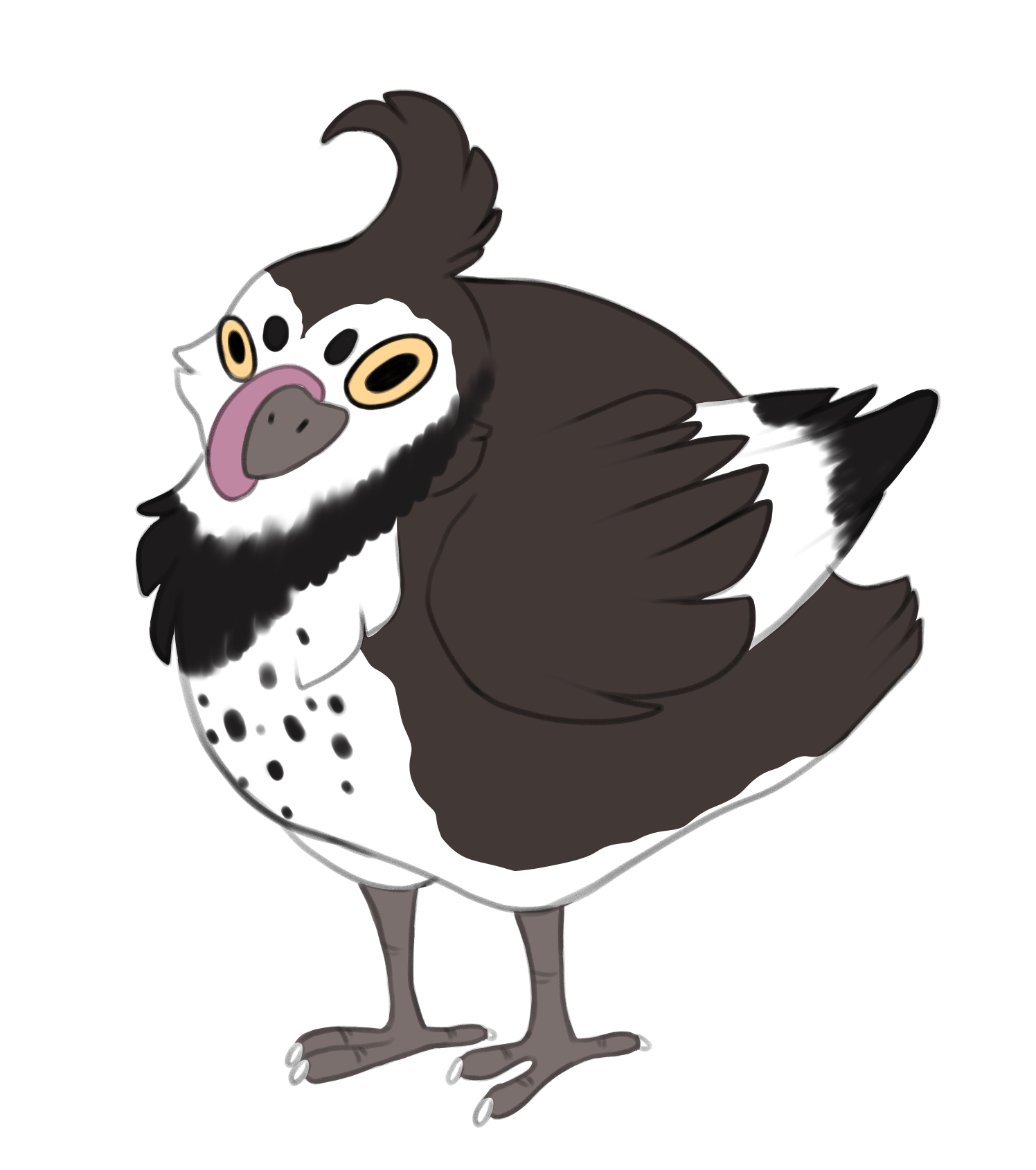 Western TouseAvistultus rotundus
Western TouseAvistultus rotundus
Prey Animals
General Description
Medium-sized round-bodied game fowl. Plumage is dense with a moderate ornamental crest. They are short-legged with three toes on anisodactyl feet. Bill small with a characteristic wattle just behind the nostrils. Surprisingly heavy-bodied, reaching up to 6 pounds.
Habitat
Predominantly coniferous forests, occassionally venturing onto beaches to forage. Prefers heavy fern understory for coverage and often thrives in the regrowth of recent forest fires.
Species Range
Continental Divide, preferring the heavy rainfall and lush forests of the Paetian region.
Diet
Heavily herbivorous, with some supplementation from insects. Leaves and fruits of ferns and low-lying shrubs make up the majority of their diet, and buds and twigs of woody plants help them survive harsher winters. Young chicks are more heavily reliant on protein-rich insects than their adult counterparts.
Reproduction
Ground nester, building bowl-shaped nests out of twigs and pine needles within the roots of trees. Produce large clutches of 8-12 cinnamon-colored eggs with darker flecking in the late spring to early summer. Incubation lasts 24-26 days. Can rarely raise two clutches in a year.
Miscellaneous
Western Touse are a populer food-source game fowl in the Paetian region, where residents traditionally use all parts of the bird to create products like decorative accessories and downy coats. Touse oil was traditionally used for oil lamps in the region, but is now mostly used for cooking. Western Touse are popularly considered an unintelligent, but endearing, species.





